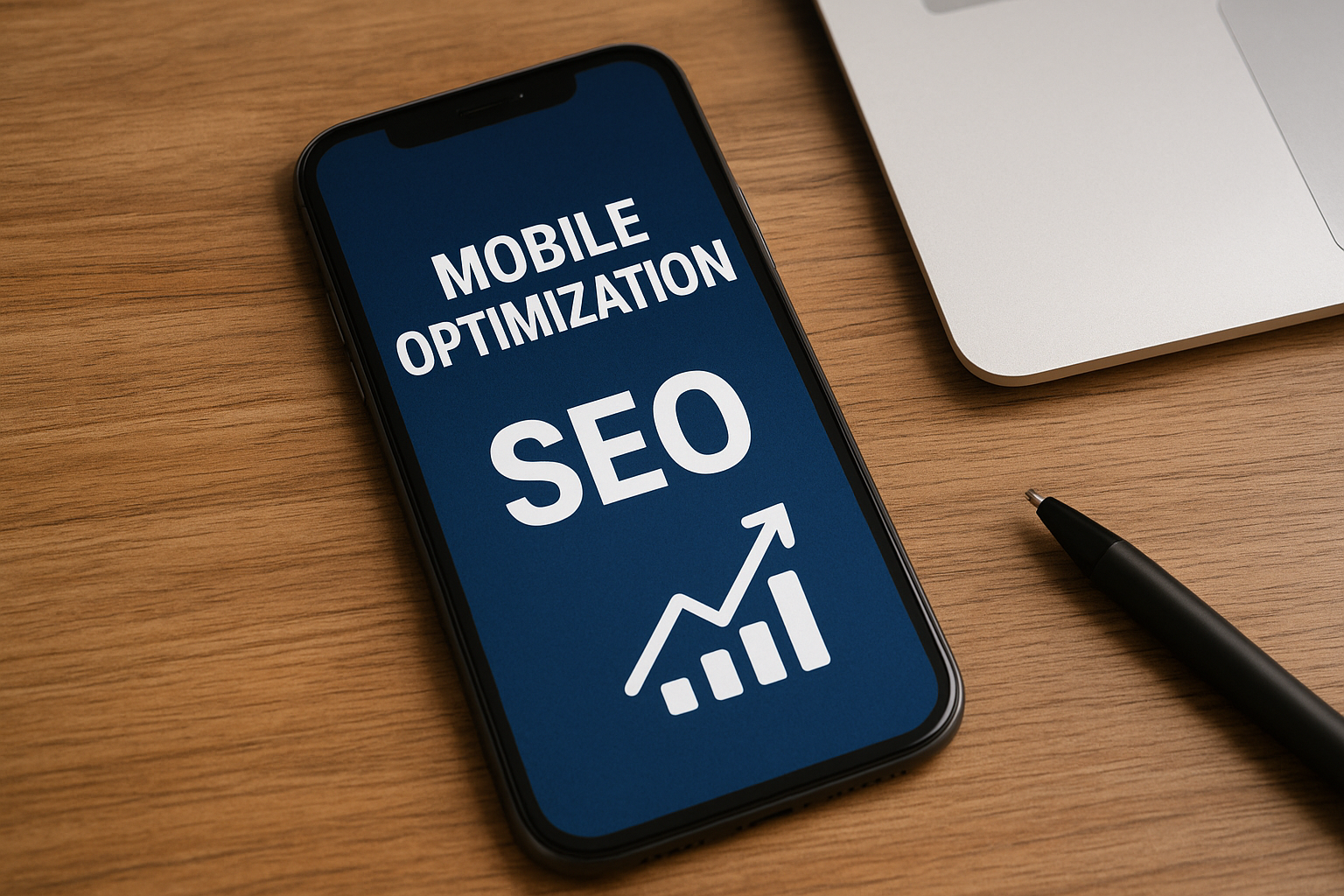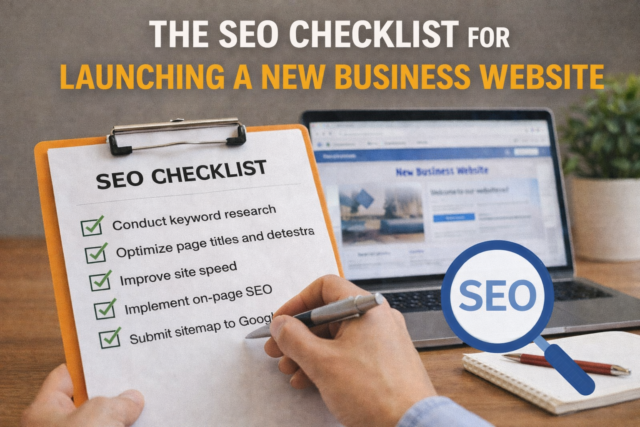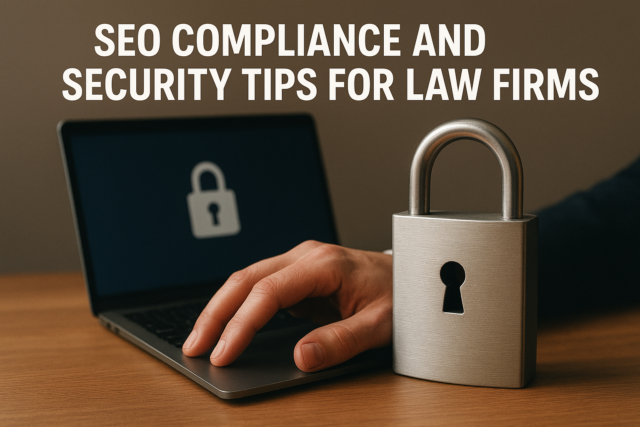Here’s What You’ll Learn in This Article
This blog explains why mobile optimization is essential for Utah businesses aiming to improve SEO and customer experience. It covers how mobile-first indexing impacts rankings, the role of page speed, engagement, and local SEO, plus industries that benefit most like healthcare, real estate, and e-commerce. You’ll also find best practices, tools, and common mistakes to avoid, showing how a mobile-first strategy boosts both visibility and conversions.
In today’s digital marketplace, businesses can no longer afford to ignore mobile users. According to recent data, over 61% of Google searches come from mobile devices, and this percentage is only increasing. For Utah businesses aiming to stand out in highly competitive industries like real estate, healthcare, tourism, and e-commerce, mobile optimization and SEO go hand-in-hand. If your website isn’t optimized for mobile devices, you’re not just losing traffic—you’re losing potential customers and revenue.
This blog dives deep into why mobile optimization is critical for SEO, how it directly affects your Google rankings, and what Utah businesses can do to get ahead of the competition.
Why Mobile Optimization Matters More Than Ever
When Google introduced its mobile-first indexing, it signaled a major shift in how websites are ranked. Essentially, Google now uses the mobile version of your website as the primary basis for ranking. This means if your website looks great on desktop but loads slowly or functions poorly on mobile, your search visibility will take a hit.
For businesses in Utah—where customers are increasingly relying on mobile devices to find services like “plumbers near me,” “best restaurants in Salt Lake City,” or “Utah dental clinics”—this can mean the difference between showing up on page one or getting buried in search results.
If you want to see Google’s exact stance, check out their guide to mobile-first indexing.
The Connection Between Mobile Optimization and SEO
Search engines prioritize user experience, and nothing disrupts user experience faster than a clunky, slow-loading website. Mobile optimization impacts SEO in several ways:
1. Page Speed and Core Web Vitals
Mobile users are impatient—studies show they leave a site if it takes longer than 3 seconds to load. Google’s Core Web Vitals, which measure things like loading speed and interactivity, play a big role in ranking. If your Utah business website doesn’t meet these standards, your SEO performance will suffer.
2. Bounce Rates and Engagement
Imagine someone searching for “family dentist in Provo” and landing on a site that doesn’t format correctly on their phone. They’ll leave immediately. High bounce rates signal to Google that your website isn’t meeting user needs, directly lowering rankings.
3. Local SEO and Mobile Searches
Most mobile searches are local. People type “coffee shop near me” or “roof repair in Salt Lake.” If your website isn’t mobile-friendly, Google is less likely to rank you in these local searches. Optimizing your mobile experience is directly tied to winning in local SEO.
4. Mobile-Friendly Content
Walls of text don’t work on small screens. Your content must be scannable with headings, bullet points, and visuals. This keeps users engaged and signals quality to search engines.
Utah Businesses That Benefit Most from Mobile Optimization
While every business needs a mobile-friendly website, certain Utah industries rely on it even more:
- Tourism and Travel: With Utah’s national parks attracting millions of visitors, tourists often rely on mobile devices to find accommodations, guides, and dining.
- Healthcare: Patients searching for “dentist in Utah” or “urgent care near me” usually do so on their phones. A poorly optimized site means lost bookings.
- Real Estate: Homebuyers browse listings on mobile constantly. A slow or cluttered interface can turn them away.
- Retail & E-commerce: With the rise of mobile shopping, Utah retailers without optimized checkout processes lose significant revenue.
If you want to understand how mobile usage is transforming these industries, Statista’s mobile commerce report provides great insights.
Best Practices for Mobile Optimization and SEO
Optimizing your site for mobile isn’t just about shrinking images or changing font sizes. It’s about creating an entirely mobile-first strategy. Here are some essential practices:
1. Responsive Web Design
A responsive website adapts to any screen size—desktop, tablet, or smartphone. Platforms like WordPress and modern website builders make this easier than ever.
2. Fast Loading Speeds
Use tools like Google PageSpeed Insights to test your site. Compress images, use caching, and minimize JavaScript to speed things up.
3. Optimize for Local SEO
Utah businesses thrive on local customers. Ensure your Google Business Profile is updated with accurate hours, location, and services. Encourage reviews, as mobile users often trust businesses with higher ratings.
4. Touch-Friendly Design
Make sure buttons are easy to click, forms are simple to fill, and navigation menus work seamlessly on mobile. Nothing frustrates users more than having to pinch and zoom repeatedly.
5. Mobile-Optimized Content
Break up text with subheadings, add visuals, and use concise language. Remember—mobile users skim content rather than reading every word.
6. Secure Your Website (HTTPS)
Google gives preference to secure websites. If your site doesn’t have an SSL certificate, it may not only hurt rankings but also scare away mobile users.
Tools to Test and Improve Mobile Optimization
Fortunately, there are many free and paid tools available to test your mobile performance:
- Google’s Mobile-Friendly Test – Checks if your website is mobile-ready.
- GTMetrix – Analyzes speed and performance.
- Ahrefs – Monitors SEO performance and mobile keyword rankings.
- SEMrush – Tracks SEO visibility across mobile and desktop.
Using these tools regularly ensures your Utah business site stays competitive.
How Mobile Optimization Boosts Conversions
Beyond SEO, mobile optimization directly affects conversions. A study by Think with Google found that mobile-friendly websites had a 67% higher chance of converting visitors into customers.
For example:
- A Provo restaurant with a fast, mobile-friendly site will see more reservations.
- An e-commerce business in Salt Lake City with an optimized mobile checkout will see fewer cart abandonments.
- A healthcare provider with click-to-call buttons makes it easier for patients to book instantly.
Common Mistakes Utah Businesses Make
Despite its importance, many businesses still overlook mobile optimization. Here are the most frequent mistakes:
- Ignoring testing: Business owners assume their site is fine without checking.
- Cluttered navigation: Too many menus or pop-ups frustrate users.
- Unoptimized images: Large image files slow down mobile loading.
- Neglecting content format: Long, unstructured content deters readers.
Avoiding these pitfalls ensures your site is truly mobile-first.
Final Thoughts
For Utah businesses, the link between mobile optimization and SEO is undeniable. Without a mobile-friendly website, you risk lower search rankings, fewer leads, and lost revenue. As competition intensifies across industries, prioritizing mobile performance is no longer optional—it’s a necessity.
The good news? With tools, best practices, and expert help, businesses can create seamless mobile experiences that attract both Google’s algorithm and real customers.
If you’re a Utah business ready to take your online presence to the next level, investing in mobile optimization should be your top priority.
FAQs
Q1: What is mobile-first indexing?
Mobile-first indexing means Google primarily uses the mobile version of your site for ranking and indexing.
Q2: How can I test if my website is mobile-friendly?
You can use Google’s Mobile-Friendly Test to check instantly.
Q3: Does mobile optimization affect local SEO?
Yes, since most local searches are done on mobile, a poorly optimized site will rank lower in local search results.
Q4: How much does it cost to optimize a website for mobile?
It varies depending on the website size and complexity, but many fixes like image compression and responsive design are affordable.
Q5: Can mobile optimization increase sales?
Absolutely. Faster, user-friendly mobile sites improve conversion rates, reduce bounce rates, and encourage customers to take action.





